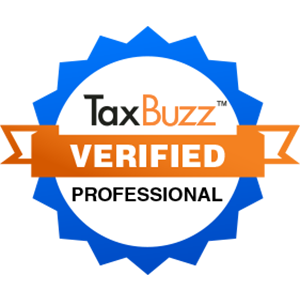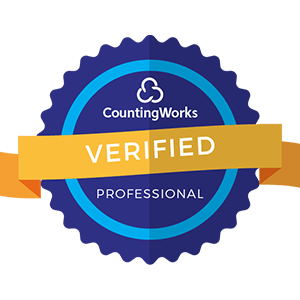
It is never too early to start preparing your business for year-end requirements. As tax season has arrived, make sure you have taken all necessary steps to prepare for payroll and your tax process this year. Put the right steps in place now that will improve the payroll management process and help you keep better records.
Year-end payroll responsibilities may include updating records, ensuring data accuracy, and preparing for the upcoming year. This guide will cover what year-end payroll is, additional year-end tax considerations, and your complete year-end payroll checklist.
Year-end audits are an involved process in which employers review and confirm employee data, process W-2 tax forms, review benefits information, gather reports, update employee data, and more. These tasks help employers calculate taxes and deductions withheld from paychecks, and the process extends from the end of the calendar year into the first quarter of the new year when tax returns will be filed.
Year-end audits help employers prepare for the coming year and for paying payroll taxes. Tax laws change frequently, so tax preparation is an ongoing process that needs close attention to detail to avoid costly mistakes.
Year-end payroll tasks should coincide with general tax planning so that a business’s processes and financial information always stay aligned. Note that there are a few important additions to this year’s payroll responsibilities because of the new forms of pandemic relief. Here are a few of the most significant year-end tax and payroll tax issues.
Many businesses may have additional tax considerations this year because of COVID-19 relief under the Coronavirus Aid, Relief, and Economic Security (CARES) Act and the second relief package signed on March 11. One important thing to note is that most U.S. businesses can attribute some losses to a disaster, meaning they can receive refunds to compensate for certain losses, including inventory losses, supply losses, or office closures. If relief was received, like a Payment Protection Program (PPP) loan, business expenses associated with loan forgiveness are deductible, and forgiven loans are not part of the business’s taxable income.
Another change related to COVID-19 and the CARES Act is payroll tax deferment. Employers were able to defer their 6.2% Social Security taxes through December 31, 2020, with half due at the end of 2021 and the other half due at the end of 2022. However, this means businesses cannot deduct payroll taxes until they pay off those deferred taxes.
The Tax Cuts and Jobs Act (TCJA) was introduced in 2017, and it repealed the corporate alternative minimum tax (AMT) but stated that businesses could claim their unused AMT credits in tax years 2018 through 2021. The CARES Act allows corporations to claim all of their remaining credits in 2018 or 2019.
The year 2020 was the first year that non-employee payments need to be reported on Form 1099-NEC instead of Form 1099-MISC, which is now only used for other miscellaneous payments. If you had independent contractors in 2020, for example, you will use Form 1099-NEC.
Employers should remember that this year and next may look different because of the pandemic. Tax laws can change quickly, however, even in a normal year, so watching for legislative changes will help you stay prepared for payroll, credits, deductions, and forms each year. The next section offers some ideas that will leave you ready to tackle any surprises.
.jpg?width=1000&name=Untitled%20design%20(63).jpg)
Payroll processing is an important step each year to keep information updated, understand tax obligations, and eliminate errors and missteps. Here is your year-end checklist to make sure you are covering all your bases:
The IRS will penalize an employer if employee information – including Social Security number, name, and address – is incorrect on W-2s. Always make sure to ask employees to confirm their information or fill out a new W-4 if anything has changed. Review details and ensure that the information you are reporting is accurate.
Year-end payroll also requires that you review information like life insurance adjustments, deferred compensation plan information, state taxable wage limit, uncollected Social Security and Medicare taxes, taxable fringe benefits, and withholding accuracy.
If you have 50 or more employees, or fewer than 50 employees and their insurance type is self-insured, you will need to report as part of the Affordable Care Act (ACA) annual reporting requirements. If you have fewer than 50 employees and they are fully insured, the insurance company files on your behalf. You do not have to report if employees are not offered insurance.
Another step in year-end payroll is making any necessary adjustments to ensure income has been recorded accurately. Adjustments to W-2s may need to be made because of noncash payments, bonuses or other incentive pay, third-party sick pay, or transportation provided by the business, among others.
You will need to have Form W-9 from non-employees to distribute the 1099-NEC or other 1099s. The W-9 form provides their tax ID and address.
Make sure all employee paychecks have been cashed. If there are uncashed checks, you need to have written proof that you made significant efforts to contact the employee. Uncashed checks must be turned over to the revenue department in your state.
Year-end payroll is also the time to prepare for the upcoming year. Make sure you have supplies like blank checks, payroll forms, and W-2s. You may also want to schedule bonus payrolls for the year, request and review special reports, and confirm all payroll dates for the next year. This time of year is also a good time to review your payroll process and ensure that you are using tools that help you ensure accuracy and efficiency, like automated data entry tools.
One of the most important takeaways is that your checklist should help you find inaccuracies or mistakes related to payroll. It should also set you up to be organized with the right forms and a set calendar of payroll tasks for the upcoming year. Payroll responsibilities can be significant, even if you are a smaller employer, so developing a thorough checklist ensures that you never miss a requirement each year.
Employers of all sizes may find these payroll tasks to be demanding and challenging. Working with a payroll management expert at Ignite HCM allows businesses to outsource these tasks, whether payroll processing, HCM software implementation, compliance and audit response services, or ADP payroll services. We offer a simpler way for you to manage payroll tasks, which can quickly become daunting amid rapidly changing tax requirements.
Contact Ignite HCM for help with your payroll management and HR optimization needs.


